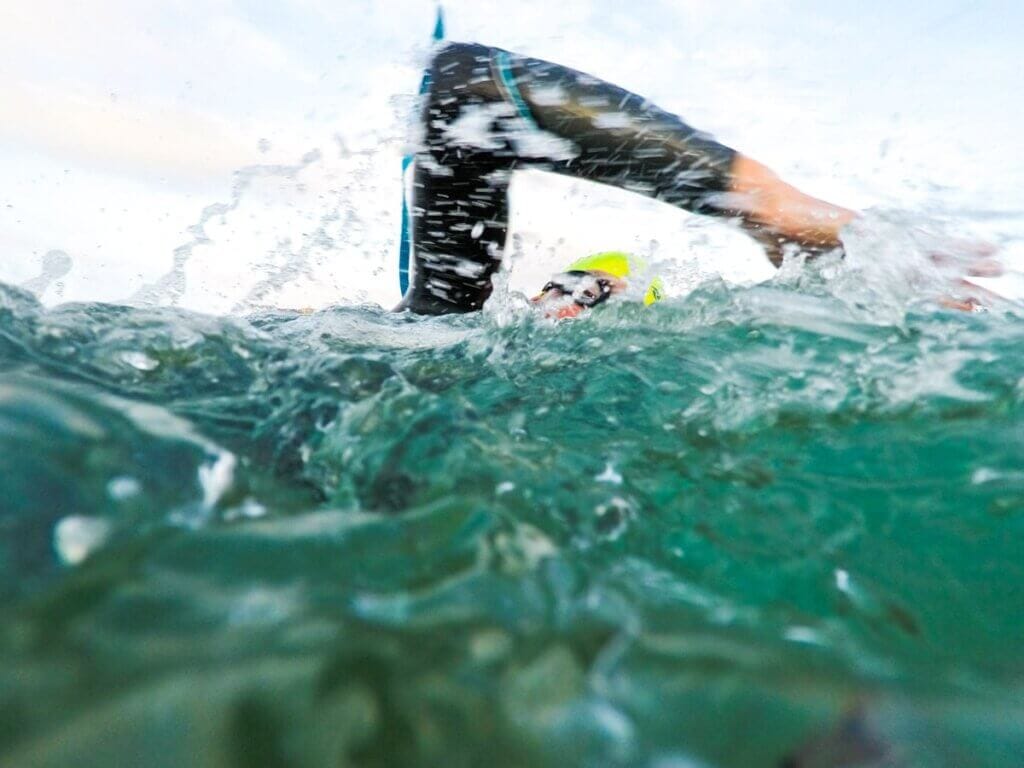There’s a lot of water in those waves

If you were to overhear a conversation at the beach between two swimmers where one of them says – “there’s a lot of water in those waves” – you’d be forgiven for thinking they’re just a little bit crazy.
Of course there is a lot of water in those waves! After all, it’s the ocean! So what the heck are they talking about?!
Among many other wave attributes, ocean swimmers (and surfers), will be observing the perceived ‘volume’ of water in the waves approaching the beach, which will, in turn, give them an indication of the energy expected in the breaking waves and currents.
The greater the volume, or the more ‘full’ or ‘fat’ the wave is, the greater the energy.
But, you won’t hear oceanographers talking about volume and fullness though, this tends to be more a visual description used by lay-swimmers and surfers.
What’s being described is actually a combination of wave height, wavelength and wave frequency.
Wave height is measured from the trough (bottom) to the crest (top) of a wave.
Wavelength describes how long the wave is, i.e. the distance from the trough of one wave to the trough of the next wave.
Without an image, visualise a classic ‘bell curve’ shape on a graph. The horizontal axis is the wavelength, and the vertical axis is the wave height.
Wave frequency is the number of waves that pass a fixed point in a given amount of time.
The frequency of a wave is inversely proportional to its wavelength. That means that waves with a high frequency have a short wavelength, while waves with a low frequency have a longer wavelength.
[Note: Waves are not water moving through the ocean, it’s in fact the energy moving forward through the water, with the water staying in one place – but that’s for another day.]
When you observe ‘full’ waves, you will almost always be observing low frequency, long wavelength waves.
Low freq. long wavelength:
__⎽-⎻⎺⎺⎻-⎽_______⎽–⎻⎺⎺⎻-⎽__
High freq. short wavelength:
__-⎺-__-⎺-__-⎺-__-⎺-__-⎺-__-⎺-_
Comparing two waves of similar height, the wave with the longer wavelength, and lower frequency will be regarded as ‘fuller’ than the other.
At their fullest, when the waves break, they will do so with more energy and the large volume of broken water will result in stronger currents. In shallow water beach environments, these currents will speed across sandbanks, sweep parallel across the beach, and head out in fast-moving rips.
Whilst these full-wave conditions might not spell the premature end of an ocean swim, they are definitely something to take into consideration when deciding whether conditions are within your limits.
And if they are, they’ll be super fun to bodysurf if you can hold them!






Responses